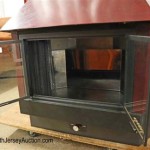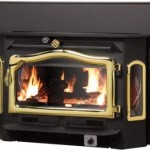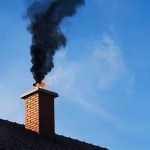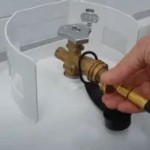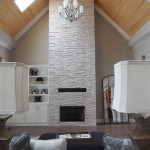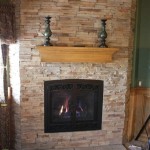No Vent Gas Fireplace Logs: A Comprehensive Guide
No vent gas fireplace logs, also known as vent-free or ventless gas fireplace logs, represent a popular heating alternative for many homeowners. These units offer the aesthetic appeal of a traditional wood-burning fireplace without the need for a chimney or venting system. Their operation and installation differ significantly from vented gas logs, impacting factors such as efficiency, safety, and application. Understanding the nuances of no vent gas fireplace logs is crucial for making an informed decision about their suitability for a particular home and lifestyle.
This article provides a comprehensive overview of no vent gas fireplace logs, covering their functionality, advantages, disadvantages, installation considerations, safety features, maintenance requirements, and comparison with other heating options. The information presented aims to equip readers with the knowledge necessary to evaluate whether a no vent gas fireplace log set aligns with their needs and preferences.
How No Vent Gas Fireplace Logs Work
No vent gas fireplace logs operate by burning natural gas or propane within a firebox designed for unvented operation. Unlike vented gas logs that require a chimney or vent to exhaust combustion byproducts, no vent logs are designed to burn fuel more completely. This complete combustion aims to minimize the production of harmful emissions such as carbon monoxide. Oxygen Depletion Sensors (ODS) are critical safety components in these systems. The ODS monitors the oxygen level in the room and automatically shuts off the gas supply if the oxygen level drops below a predetermined threshold, indicating a potential buildup of carbon monoxide.
The logs themselves are typically made from ceramic or refractory cement, molded and painted to resemble natural wood. These logs radiate heat into the room. The realism of the flame pattern varies depending on the quality and design of the log set. Some models incorporate features such as glowing embers and adjustable flame height to enhance the ambiance. The heat output of no vent gas logs is measured in British Thermal Units (BTUs). Selecting the appropriate BTU rating is important for effectively heating the intended space without overheating it.
The operation of a no vent gas fireplace log set is typically controlled by a manual control valve, a remote control, or a thermostat. Manual control valves offer basic on/off and flame height adjustments. Remote controls provide convenient operation from a distance, and thermostats allow for automatic temperature regulation. Some advanced models incorporate features such as programmable timers and zone heating capabilities.
Advantages of No Vent Gas Fireplace Logs
No vent gas fireplace logs offer several advantages over traditional wood-burning fireplaces and vented gas logs. One of the primary benefits is their ease of installation. Because they do not require a chimney or vent, they can be installed in a wider range of locations, including rooms without existing fireplace infrastructure. This eliminates the cost and complexity associated with chimney construction or modifications.
Another significant advantage is their high energy efficiency. Since no heat is lost through a vent, nearly 100% of the heat generated is radiated into the room. This can translate to lower heating bills compared to vented fireplaces or traditional wood-burning options. The radiant heat provided by the logs is also known for its comfort and ability to warm objects directly, rather than just heating the air.
Furthermore, no vent gas fireplace logs offer convenience and ease of use. They eliminate the need to chop, store, and haul firewood. Starting a fire is as simple as turning a switch or pressing a button. They also eliminate the mess associated with wood-burning fireplaces, such as ashes, soot, and creosote buildup.
The aesthetic appeal is another key advantage. Modern no vent gas log sets are designed to closely resemble natural wood fires, providing a realistic and visually pleasing ambiance. The adjustable flame height and glowing ember features allow homeowners to create a customized look and feel.
No vent gas fireplace logs also offer a degree of flexibility in terms of placement. They can be installed in existing fireplaces or used in freestanding fireplace units. This versatility makes them a suitable heating solution for various room sizes and architectural styles.
Disadvantages and Safety Considerations
Despite their advantages, no vent gas fireplace logs also have certain disadvantages and safety considerations that must be carefully evaluated. The primary concern is the potential for indoor air quality issues. While no vent logs are designed for complete combustion, they still produce small amounts of carbon monoxide, nitrogen dioxide, and water vapor. Proper ventilation is crucial to prevent the buildup of these byproducts.
Building codes often restrict the use of no vent gas appliances in certain areas, such as bedrooms and small, enclosed spaces. It is essential to check local building codes and regulations before installing a no vent gas fireplace log set. Adequate room size and ventilation are typically required to ensure safe operation.
Another potential concern is the increased humidity level. The combustion process produces water vapor, which can contribute to increased humidity in the room. This can be problematic in homes with poor ventilation or moisture control. High humidity levels can promote mold growth and exacerbate respiratory problems.
While ODS systems provide a crucial safety measure, they are not foolproof. Regular maintenance and inspection of the ODS are essential to ensure its proper functioning. It is also advisable to install a carbon monoxide detector near the fireplace to provide an additional layer of protection.
The heat output of no vent gas fireplace logs can be substantial, and it is important to select a unit with the appropriate BTU rating for the room size. Overheating can be uncomfortable and potentially unsafe. It is also important to keep flammable materials away from the fireplace to prevent fire hazards.
Some individuals may also experience sensitivity to the fumes or odors produced by no vent gas fireplace logs. This is more common in individuals with respiratory conditions or allergies. If sensitivity is a concern, it is advisable to test the unit in a well-ventilated area before installation.
Installation and Maintenance
Proper installation is critical for the safe and efficient operation of no vent gas fireplace logs. It is highly recommended to have the installation performed by a qualified professional. The installer will ensure that the unit is properly connected to the gas supply, that the firebox is adequately sized, and that the ODS is functioning correctly.
Before installation, it is important to ensure that the existing fireplace or firebox meets the manufacturer's specifications for no vent gas logs. This includes verifying the dimensions of the firebox, the type of flooring, and the clearances to combustible materials. Failure to meet these requirements can result in unsafe operation or damage to the unit.
Regular maintenance is also essential for ensuring the long-term performance and safety of no vent gas fireplace logs. This includes inspecting the logs for cracks or damage, cleaning the burner assembly, and checking the ODS for proper functioning. The manufacturer's instructions should be followed carefully when performing maintenance procedures.
The logs should be cleaned periodically to remove dust and debris. A soft brush or vacuum cleaner can be used for this purpose. Avoid using harsh chemicals or abrasive cleaners, as they can damage the logs.
The burner assembly should be inspected annually for signs of corrosion or blockage. If necessary, the burner can be cleaned with a wire brush and compressed air. It is important to disconnect the gas supply before performing any maintenance on the burner assembly.
The ODS should be tested periodically to ensure that it is functioning correctly. This can be done by following the manufacturer's instructions or by contacting a qualified service technician. If the ODS is not functioning properly, it should be replaced immediately.
It is also important to have the gas supply line inspected regularly for leaks. This can be done by using a soapy water solution to check for bubbles around the gas fittings. If a leak is detected, the gas supply should be shut off immediately and a qualified service technician should be contacted.
Comparison with Other Heating Options
No vent gas fireplace logs represent one of several heating options available to homeowners. Comparing them with other options, such as vented gas fireplaces, electric fireplaces, wood-burning fireplaces, and central heating systems, can help in making an informed decision.
Vented gas fireplaces offer a similar aesthetic appeal to no vent gas logs but require a chimney or vent for exhausting combustion byproducts. While they may offer a more realistic flame pattern and lower humidity levels, they are less energy-efficient due to heat loss through the vent.
Electric fireplaces offer the convenience of plug-and-play operation and do not produce any combustion byproducts. However, they typically provide less heat output than gas fireplaces and may not offer the same level of ambiance. The operating cost of electric fireplaces can also be higher, depending on electricity rates.
Wood-burning fireplaces provide a traditional and authentic fireplace experience. However, they require significant effort in terms of firewood management, cleaning, and maintenance. They also produce more pollutants and are less energy-efficient than gas fireplaces.
Central heating systems, such as furnaces and heat pumps, provide whole-house heating but may not offer the same level of aesthetic appeal or zone heating capabilities as fireplaces. They also require a more complex installation and maintenance process.
The choice of heating option depends on individual preferences, budget, lifestyle, and the specific needs of the home. No vent gas fireplace logs offer a balance of aesthetic appeal, convenience, and energy efficiency, making them a suitable option for many homeowners. However, it is important to carefully consider the safety considerations and maintenance requirements before making a decision.

Napoleon Gvfl30 Ventless Gas Log Set 30 Inch

18 Evening Embers See Thru Ventless Gas Fireplace Logs
:max_bytes(150000):strip_icc()/ventless-gas-fireplaces-4160746-hero-f9d4bdcd9bd446eb84406de306f790ba.jpg?strip=all)
How To Pick Out A Ventless Gas Fireplace

Top 6 Ventless Gas Log Sets Woodlanddirect Com

Vent Free Gas Log Sets A List Of Do S And Don Ts

Duluth Forge 22 In Winter Oak Vent Free Dual Fuel Gas Fireplace Log Set 32 000 Btu Thermostat Control 170803 The Home Depot

Pleasant Hearth Wildwood 24 In Vent Free Dual Fuel Gas Fireplace Logs Vfl2 Ww24dt The Home Depot

Monessen Ph Mon Mountain Cedar Vent Free Gas Log Set

Vent Free Unvented Gas Logs Greenville Sc Blue Sky Chimney

Empire Driftwood 24 Inch Electronic Ignition Vent Free Logs Fine S Gas
Related Posts


